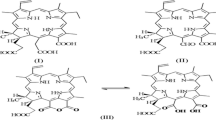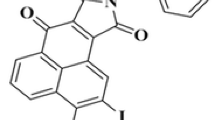Abstract
In this study, we evaluated the effect of gallium phthalocyanine chloride (GaPcCl) as a radio- and photosensitizer on MCF-7 breast cancer cell line. We incubated cells with GaPcCl in different concentrations (from 3.125 to 100 μg/ml). Then cells in separate groups were exposed to different light doses (1.8 and 2.8 J/cm2) at wavelength of 660 nm and 2-Gy X-ray ionizing radiation, alone and in combination. Finally, cell survival and apoptosis were determined by MTT assay and flow cytometry, respectively. The results showed that the deactivated GaPcCl at concentration of 100 µg/ml reduces the cell viability up to 15%. While, photoactivated GaPcCl (100 µg/ml) at light dose of 2.8 J/cm2 significantly decreases cell viability up to 55.3%. Although MTT assay demonstrated that GaPcCl is not act as a radiosensitizer, flow cytometry showed significant increase in cell apoptosis when GaPcCl was exposed to 2 Gy X-ray. Using of GaPcCl-PDT (photodynamic therapy) integration with X-ray substantially increased cell death in comparison to the absence of X-ray. Furthermore, flow cytometry displayed a significant increase in apoptosis cells (especially late apoptosis) in this combination therapy. Our result proved that GaPcCl is an effective photosensitizer in MCF-7 human breast cancer cell line. The combination of GaPcCl-PDT and radiotherapy can be an efficient treatment against cancer. This approach needs further investigations on animal models for human purposes.
Graphic abstract






Similar content being viewed by others
References
Torre LA, Bray F, Siegel RL, Ferlay J, Lortet-Tieulent J, Jemal A (2015) Global cancer statistics, 2012. CA Cancer J Clin 65(2):87–108
Ridner SH, Dietrich MS, Kidd N (2011) Breast cancer treatment-related lymphedema self-care: education, practices, symptoms, and quality of life. Support Care Cancer 19(5):631–637
Brown SB, Brown EA, Walker I (2004) The present and future role of photodynamic therapy in cancer treatment. Lancet Oncol 5(8):497–508
Castano AP, Demidova TN, Hamblin MR (2004) Mechanisms in photodynamic therapy: part one—photosensitizers, photochemistry and cellular localization. Photodiagn Photodyn Ther 1(4):279–293
Mroz P, Yaroslavsky A, Kharkwal GB, Hamblin MR (2011) Cell death pathways in photodynamic therapy of cancer. Cancers 3(2):2516–2539
Ormond AB, Freeman HS (2013) Dye sensitizers for photodynamic therapy. Materials 6(3):817–840
Grobosch M, Schmidt C, Kraus R, Knupfer M (2010) Electronic properties of transition metal phthalocyanines: the impact of the central metal atom (d 5–d 10). Org Electron 11(9):1483–1488
Nyokong T (2007) Effects of substituents on the photochemical and photophysical properties of main group metal phthalocyanines. Coord Chem Rev 251:1707–1722
Kinsella TJ, Baron ED, Colussi VC, Cooper KD, Hoppel CL, Ingalls ST, Kenney ME, Li X, Oleinick NL, Stevens SR (2011) Preliminary clinical and pharmacologic investigation of photodynamic therapy with the silicon phthalocyanine photosensitizer Pc 4 for primary or metastatic cutaneous cancers. Front Oncol 1:14
Tynga I, Houreld N, Abrahamse H (2013) The primary subcellular localization of Zinc phthalocyanine and its cellular impact on viability, proliferation and structure of breast cancer cells (MCF-7). J Photochem Photobiol B Biol 120:171–176
Zielichowska A, Saczko J, Garbiec A, Dubińska-Magiera M, Rossowska J, Surowiak P, Choromańska A, Daczewska M, Kulbacka J, Lage H (2015) The photodynamic effect of far-red range phthalocyanines (AlPc and Pc green) supported by electropermeabilization in human gastric adenocarcinoma cells of sensitive and resistant type. Biomed Pharmacother 69:145–152
Matroule J-Y, Carthy CM, Granville DJ, Jolois O, Hunt D, Piette J (2001) Mechanism of colon cancer cell apoptosis mediated by pyropheophorbide-a methylester photosensitization. Oncogene 20(30):4070–4084
Chauke V, Ogunsipe A, Durmuş M, Nyokong T (2007) Novel gallium (III) phthalocyanine derivatives–Synthesis, photophysics and photochemistry. Polyhedron 26(12):2663–2671
Lessa JA, Parrilha GL, Beraldo H (2012) Gallium complexes as new promising metallodrug candidates. Inorg Chim Acta 393:53–63
Maduray K, Odhav B (2012) Efficacy of gallium phthalocyanine as a photosensitizing agent in photodynamic therapy for the treatment of cancer. In: Proc. SPIE, pp 85530G–85530M
Maduray K, Odhav B (2013) The in vitro photodynamic effect of laser activated gallium, indium and iron phthalocyanine chlorides on human lung adenocarcinoma cells. J Photochem Photobiol B Biol 128:58–63
Tudor D, Nenu I, Filip GA, Olteanu D, Cenariu M, Tabaran F, Ion RM, Gligor L, Baldea I (2017) Combined regimen of photodynamic therapy mediated by Gallium phthalocyanine chloride and Metformin enhances anti-melanoma efficacy. PLoS One 12(3):e0173241
Benayoun L, Schaffer M, Bril R, Gingis-Velitski S, Segal E, Nevelsky A, Satchi-Fainaro R, Shaked Y (2013) Porfimer-sodium (Photofrin-II) in combination with ionizing radiation inhibits tumor-initiating cell proliferation and improves glioblastoma treatment efficacy. Cancer Biol Ther 14(1):64–74
Mohammadi Z, Sazgarnia A, Rajabi O, Seilanian Toosi M (2017) Comparative study of X-ray treatment and photodynamic therapy by using 5-aminolevulinic acid conjugated gold nanoparticles in a melanoma cell line. Artif Cells Nanomed Biotechnol 45(3):467–473
Rutkovskienė L, Plėšnienė L, Sendiulienė D, Stančius A, Liutkevičiūtė-Navickienė J (2011) Sensitization of rat C6 glioma cells to ionizing radiation by porphyrins. Acta Medica Lituanica 18(2):56–62
Colasanti A, Kisslinger A, Quarto M, Riccio P (2004) Combined effects of radiotherapy and photodynamic therapy on an in vitro human prostate model. Acta Biochim Pol 51(4):1039–1046
Pogue BW, O’hara JA, Demidenko E, Wilmot CM, Goodwin IA, Chen B, Swartz HM, Hasan T, (2003) Photodynamic therapy with verteporfin in the radiation-induced fibrosarcoma-1 tumor causes enhanced radiation sensitivity. Cancer Res 63(5):1025–1033
Ghoodarzi R, Changizi V, Montazerabadi A, Eyvazzadaeh N (2016) Assessing of integration of ionizing radiation with Radachlorin-PDT on MCF-7 breast cancer cell treatment. Lasers Med Sci 31(2):213–219
Montazerabadi AR, Sazgarnia A, Bahreyni-Toosi MH, Ahmadi A, Aledavood A (2012) The effects of combined treatment with ionizing radiation and indocyanine green-mediated photodynamic therapy on breast cancer cells. J Photochem Photobiol B Biol 109:42–49
Sazgarnia A, Montazerabadi AR, Bahreyni-Toosi MH, Ahmadi A, Aledavood A (2013) In vitro survival of MCF-7 breast cancer cells following combined treatment with ionizing radiation and mitoxantrone-mediated photodynamic therapy. Photodiagn Photodyn Ther 10(1):72–78
Desouky O, Ding N, Zhou G (2015) Targeted and non-targeted effects of ionizing radiation. J Radiat Res Appl Sci 8(2):247–254
Schaffer M, Ertl-Wagner B, Pa Schaffer, Kulka U, Jori G, Duhmke E, Hofstetter A (2005) The application of photofrin II® as a sensitizing agent for ionizing radiation-a new approach in tumor therapy? Curr Med Chem 12(10):1209–1215
Austerlitz C, Souza VLBd, Campos DMT, Kurachi C, Bagnato V, Sibata C (2008) Enhanced response of the fricke solution doped with hematoporphyrin under X-rays irradiation. Braz Arch Biol Technol 51(2):271–279
Yamamoto J, Kitagawa T, Tanaka T, Ueta K, Akiba D, Nakano Y, Nishizawa S (2015) Radiosensitizing effect of 5-aminolevulinic acid for malignant gliomas in experimental glioma in vivo study. Photodiagn Photodyn Ther 12(3):329
Jenkins PA, Carroll JD (2011) How to report low-level laser therapy (LLLT)/photomedicine dose and beam parameters in clinical and laboratory studies. Photomed Laser Surg 29(12):785–787
Abid NBS, Rouis Z, Nefzi F, Souelah N, Aouni M (2012) Evaluation of dimethylthiazol diphenyl tetrazolium bromide and propidium iodide inclusion assays for the evaluation of cell viability by flow cytometry. J Appl Pharm Sci 2(5):10–14
Santivasi WL, Xia F (2014) Ionizing radiation-induced DNA damage, response, and repair. Antioxid Redox Signal 21(2):251–259
Lucky SS, Soo KC, Zhang Y (2015) Nanoparticles in photodynamic therapy. Chem Rev 115(4):1990–2042
Ebrahimi M, Nikoofard H, Faridbod F, Dezfuli AS, Beigizadeh H, Norouzi P (2017) A ceria NPs decorated graphene nano-composite sensor for sulfadiazine determination in pharmaceutical formulation. J Mater Sci Mater Electron 28(22):16704–16712
Khademi S, Sarkar S, Kharrazi S, Amini SM, Shakeri-Zadeh A, Ay MR, Ghadiri H (2018) Evaluation of size, morphology, concentration, and surface effect of gold nanoparticles on X-ray attenuation in computed tomography. Phys Med 45:127–133
Li Y, Dong H, Li Y, Shi D (2015) Graphene-based nanovehicles for photodynamic medical therapy. Int J Nanomed 10:2451
Acknowledgements
This study has been supported by Iran University of Medical Sciences, Grant number: 28843.
Author information
Authors and Affiliations
Corresponding authors
Ethics declarations
Conflict of interest
The authors report no conflict of interest in this work.
Additional information
Publisher's Note
Springer Nature remains neutral with regard to jurisdictional claims in published maps and institutional affiliations.
Rights and permissions
About this article
Cite this article
Mayahi, S., Neshasteh-Riz, A., Pornour, M. et al. Investigation of combined photodynamic and radiotherapy effects of gallium phthalocyanine chloride on MCF-7 breast cancer cells. J Biol Inorg Chem 25, 39–48 (2020). https://doi.org/10.1007/s00775-019-01730-w
Received:
Accepted:
Published:
Issue Date:
DOI: https://doi.org/10.1007/s00775-019-01730-w




